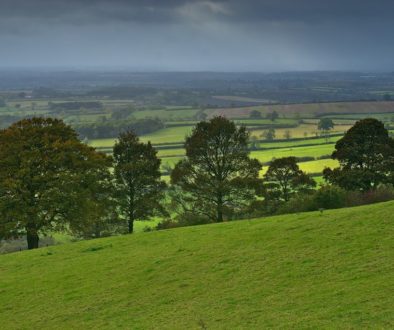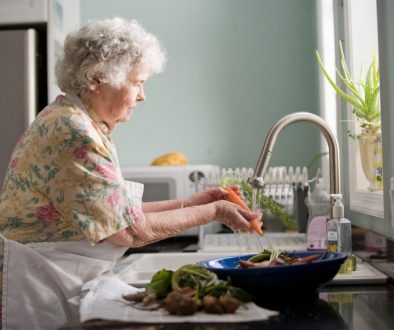Rural services: Pay for play?
Are we prepared to pay for play when it comes to rural services? Jessica Sellick investigates.
RURAL service provision remains a challenging area of policy and practice, amid the reality of significant cuts in public expenditure that may follow irrespective which party is in Government after 6 May combined with ever-increasing demand on services and the rising expectations of service users.
From the closure of post offices and primary schools to the quality of health and social care provision; ensuring rural communities are provided with good services is of key concern.
But ‘what’ are ‘rural’ ‘services’ and ‘who’ should they be for? Should rural residents, for example, expect equitable access to and outcomes from services compared with urban dwellers? And, going forward, what type of public service provision can we afford? I would like to offer three points.
First, at a conceptual level, what are rural services? Defra states that it does not directly deliver services in rural areas but instead works to promote the interests of rural people by acting as the rural champion within Government. Within Defra therefore ‘services’ become subsumed as discrete elements that make up sustainable communities (i.e., health, education, employment, crime, social capital and quality of life, etc) or, under its ‘rural and countryside’ remit, compartmentalised according to transport, health, housing and planning, fuel poverty, education, broadband, stress and community halls.
Taking a more expansive approach, The Carnegie UK Trust in its Manifesto for Rural Communities (2009) is convinced that there are some services that are ‘essential’ and should be available wherever people live – these ‘essential services’ include utilities, affordable/healthy food, community meeting place, primary level education, benefits for those who are eligible, general health care and security/public safety.
Moving beyond a list, the Rural Services Network (RSN) considers services to be any activity delivered by public bodies and local authorities, as well as those that are commissioned, contracted or subsidised by them but also those provided directly by the private and community sectors without direct subsidy. Yet, what some of these policy documents are underpinned by is a reflection of what services are provided rather than what might be needed. This leads services to be subsumed into the ’public sector’ ‘statutory obligations’ and ‘areas’ (e.g. health, education), with the capacity of rural residents to find out about services and how to use them or indeed to identify new services overlooked.
Secondly, the funding formulas used to decide ‘what’ and ‘how’ public services are provided. The RSN tirelessly campaigns for funding formulae to distribute resources in a fairer way that recognises costs relating to settlement patterns, transport and access. Put simply, rural services cost more to deliver than those in urban areas. Most recently this was demonstrated by an Inquiry into the funding formulae for health and education provision carried out by the All-Party Parliamentary Group on Rural Services. In its Final Report, published in March 2010, the Inquiry recommended that funds are allocated on a ‘cost-based approach’ rather than according to ‘need’ to take account of different types of area, with top-ups to adjustment for need and other priorities.
The RSN, however, remains concerned that “rural people [are] paying more (in council tax terms), getting less and having to pay more from their (lower than national average) net disposable income to access services… this is an issue of short term equality and long term sustainability of rural communities”. Indeed, the Countryside Alliance in its Rural Manifesto (2009) estimates that people living in rural areas travel around 10,000 miles per year to access ‘essential services’ – 43% more than residents of towns.
The scale and pace of change affecting rural service delivery is striking. The Commission for Rural Communities (CRC) collects data on ‘service outlets’, both public and private. Defined according to their ‘essential’ and ‘everyday’ role, this includes postcode-level data on the location of banks, cash points, GP surgeries, dental practices, Jobcentres, petrol stations, hospitals and schools. The CRC then looks at how the outlets are distributed and how transport facilitates people’s access to services.
The CRC State of the Countryside Report (2008) revealed that the number of outlets continued to decline in both urban and rural areas but because of the larger distances involved in rural areas the availability fell lower and faster. In the current climate, what kinds of services can we afford in rural areas? How can we encourage different service providers to collaborate (to encourage value-for-money)? How do and can rural services respond to issues such as poverty, worklessness, the closure of service outlets, transport/access?
Thirdly, this briefing raises fundamental questions about equity and social justice. In its ‘Rural Review of Public Services’ (published in March 2010), the RSN moves beyond ‘access’ and ‘need’ per se to consider issues around fairness, expectations and sustainability. How can we ensure providers, users and communities have a voice in determining how rural services are identified, designed, funded and delivered?
At CLOWNS – a children’s charity providing parents/carers and children in rural isolation– I have experienced how citizens and communities have a bigger role in determining the services they want. In addition to delivering play sessions via a play bus, toy library and scrap store (!), the charity works with other agencies that require rural community access (e.g. health visitor, family support workers) and monitors play sessions on a regular basis, changing its approach according to feedback.
In attempting to tackle rural poverty and disadvantage, CLOWNS also demonstrates the wider economic, environmental and social benefits that services bring to rural communities (e.g. CLOWNS uses underutilised resources in communities including empty rooms at community venues to deliver play sessions; CLOWNS works with other agencies to share knowledge and expertise about health, literacy and numeracy and CLOWNS provides parents/carers with opportunities to undertake education and training).
Yet CLOWNS is dealing with many of the challenges facing the voluntary, community and public sectors in delivering services – including funding and how to safeguard children’s services in rural areas. We need to consider what kinds of services rural residents need to access (e.g. utilities, food, transport, health, education?) to sustain vibrant rural communities and going forward, determine the type of public service provision we can afford – are we prepared to pay up for play?
Jessica Sellick is a rural consultant at Rose Regeneration. She can be contacted at jessica.sellick.roseregeneration.co.uk.


